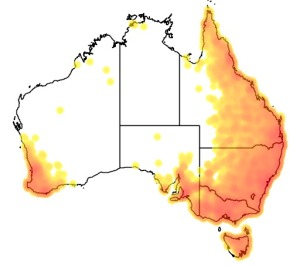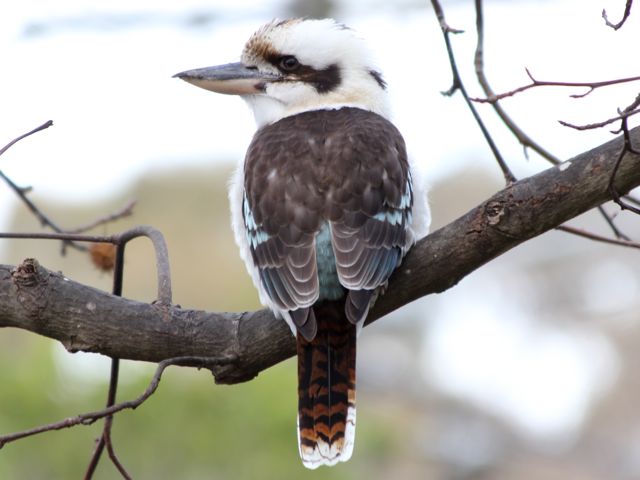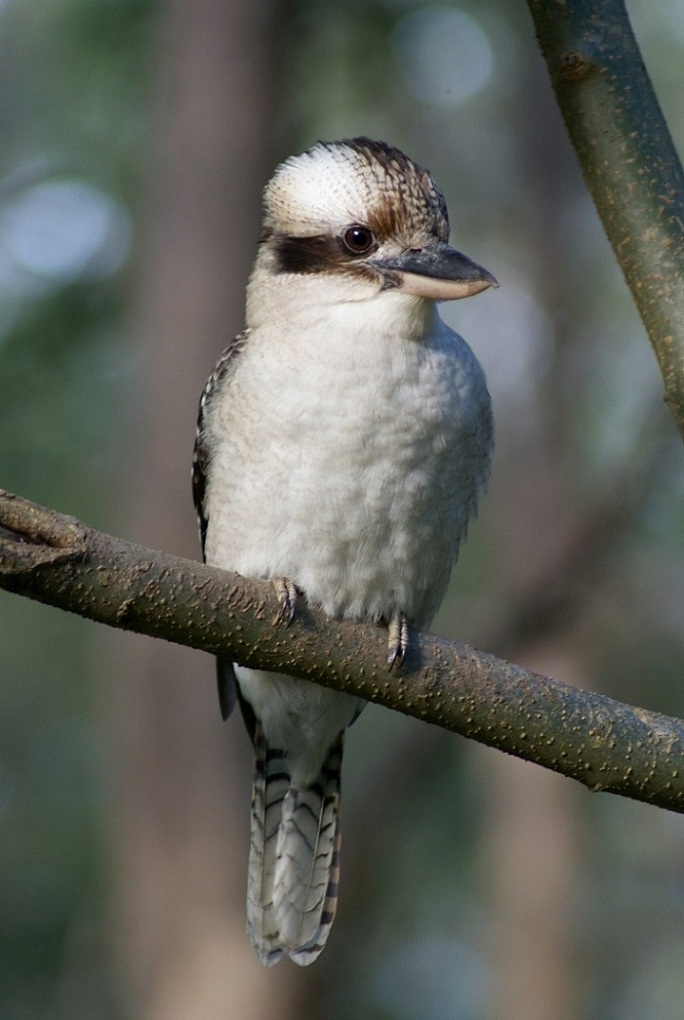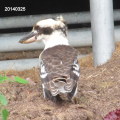Colours
Distinguishing features
It has a large head, a prominent brown eye, and a very large bill. The sexes are very similar, although the female averages larger and has less blue to the rump than the male.
They have a white or cream-coloured body and head with a dark brown stripe through each eye and more faintly over the top of the head. The wings and back are brown with sky blue spots on the shoulders. The tail is rusty reddish-orange with dark brown bars and white tips on the feathers. The heavy bill is black on top and bone coloured on the bottom, (Wikipedia)
Size
- From 43 cm to 48 cm (Length of specimen)
Wingspan
- Wingspan data is not yet available.
Synonyms
Comments
If Laughter is emotive, uncontrollable and socially bonding then it is not just the Kookaburra but other birds that laugh and a place full of birds is a place full of laughter. Laughter is a display of playfulness and friendship that brings happiness.
So if you are sad, listen to the birds, listen to the Kookaburra.
by David Witherall
Distribution

©Atlas of Living Australia: Australian distribution: Laughing Kookaburra (Dacelo (Dacelo) novaeguineae)
Distribution and habitat preferences
It is native to eastern mainland Australia, and has also been introduced to Tasmania, Flinders Island and Kangaroo Island.
Some were also introduced to New Zealand between 1866 and 1880, but only those released on Kawau Island by Sir George Grey survived. Descendants of these individuals are found there today. Remnants of this population have been seen on the New Zealand mainland near Matakana.
Individuals were released at Perth, Western Australia, in 1898 and can now be found throughout southwest Australia. (Wikipedia)
Local abundance
- Cape Kidnappers, New Zealand: rare
Audio recordings
Diet
Theyhunt much as other kingfishers (or indeed Australasian robins) do: by perching on a convenient branch or wire and waiting patiently for prey to pass by. Common prey include mice and similar-sized small mammals, large insects, lizards, small birds and nestlings, and most famously, snakes. Small prey are preferred, but kookaburras sometimes take large creatures, including venomous snakes much longer than their bodies. (Wikipedia)



